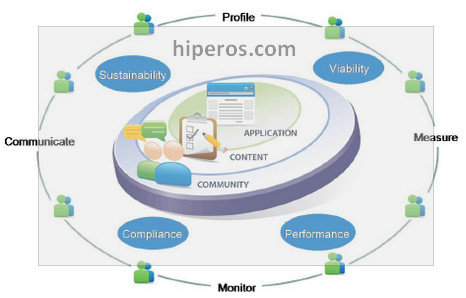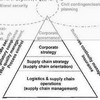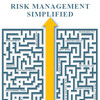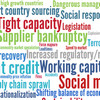 Supply chains have gone global. No longer are they a point-to-chain of goods flowing from a source to a consumer, but a global network of interlinked businesses, processes and services. Supply chain risks have gone global, too, and one tiny incident somewhere in this vast network may result in devastating effects that can ripple across the entire supply chain. No wonder then that supply chain risk has become a major selling point for consultants who are making a living from selling solutions that are “guaranteed” to capture and manage the exact and full risk that a company is facing. We academics often frown at these consultants and their glossy whitepapers, but truth is that some of them are highly valuable and well-researched, and excellent food for thought. Take this whitepaper for instance, An Integrated View of Supplier Risk by a company called Hiperos. Here, supplier risk management is focused on four areas: the supplier’s viability, performance, compliance and corporate social performance. That is a perspective very much in line with my own ideas of holistic risk management.
Supply chains have gone global. No longer are they a point-to-chain of goods flowing from a source to a consumer, but a global network of interlinked businesses, processes and services. Supply chain risks have gone global, too, and one tiny incident somewhere in this vast network may result in devastating effects that can ripple across the entire supply chain. No wonder then that supply chain risk has become a major selling point for consultants who are making a living from selling solutions that are “guaranteed” to capture and manage the exact and full risk that a company is facing. We academics often frown at these consultants and their glossy whitepapers, but truth is that some of them are highly valuable and well-researched, and excellent food for thought. Take this whitepaper for instance, An Integrated View of Supplier Risk by a company called Hiperos. Here, supplier risk management is focused on four areas: the supplier’s viability, performance, compliance and corporate social performance. That is a perspective very much in line with my own ideas of holistic risk management.
Four areas of concern
The role of suppliers has dramatically changed over the past fifteen to twenty years, says Hiperos. Suppliers no longer simply provide core commodities or products, they perform a complex set of services and supply chains have become complex supply networks. While the potential reward from having core services delivered by third-party providers is significant, so are the risks, Jack Barry said in his 2004 article on Supply chain risk in an uncertain global supply chain environment. While outsourcing may be cutting the costs, it is not necessarily cutting the risks in the same manner, and Hiperos have come with their own vision of where this risk is located:
- Viability
- suppliers’ ability to maintain a healthy operation
- Performance
- suppliers’ quality of service to achieve expected value
- Compliance
- suppliers’ discipline to adhere to internally and externally mandated guidelines
- Social Responsibility
- suppliers’ alignment with internal social responsibility initiatives
What do these four areas of supplier risk mean in practice?
Viability
As companies rely on third-party providers to deliver critical services, tracking the viability and health of key suppliers is imperative. Supplier bankruptcy can have dire consequences, not only for the companies using its services but also for other suppliers who were working together with that supplier, which in turn may limit the alternative sourcing options if one supplier fails. Recent research shows that the German automotive industry is an example of this.
Performance
What happens when supplier service and performance levels do not meet expectations? Not only is internal and external customer satisfaction damaged, management costs can also increase while attempting to bring performance back in line, and worse, revenue-generating services can be disrupted. That is why companies need to identify key evaluation criteria, allow all stakeholders to rate performance, and have a way to communicate corrective action plans.
Compliance
When companies originally started outsourcing, there was a misconception that the responsibility for compliance was also being outsourced. Not so. Risk can not be outsourced. In fact, in most instances, companies are as responsible for their suppliers’ actions as they are for their own, in areas such as:
- Financial
- SOX, SEC, FCC, FTC, OCC Bulletin 2001-47
- Safety
- OSHA, FDA, EMAS
- Data Privacy
- HIPAA, GLBA, EU Data Protection Directive
- Security
- IT, Physical Risk – Insurance, BCP, Political, Currency
- Legal
- Patriot Act, Homeland Security, Conflict of Interest
- Quality
- ISO, ANSI, CSA, ASME
- Trade
- C-TPAT
While the sourcing company may be well aware of the regulations concerning its business, the supplier may not be equally aware that these rules apply to him as well.
Social responsibility
Sustainability and corporate social responsibility have grown in importance during the past few years and will be even more important in the future, as this report on future value chain trends shows, and is something that Archie B Caroll modelled in his three-dimensional model of corporate performance, as early as 1979. Sustainability and corporate social responsibility programs cover broad areas ranging from diversity, safety, and carbon footprint, to human rights and last, but not least: creating a positive impression on consumers. But the benefits from these programs are not simply good will – they have real macro and micro economic implications, and therefore, need to be monitored just as closely as a supplier’s viability, performance, and compliance.
Four actions
The four areas of concern above require different sets of actions. Hiperos describes them as such:
- Viability -> Profile
- Performance -> Measure
- Compliance -> Monitor
- Social Responsibility -> Communicate
I think these actions perfectly match their risk areas. First you establish a financial profile of your supplier, you measure the performance, you monitor the compliance, and you communicate to the outside world and the stakeholder whether and how the operations are in accordance with corporate social responsibility.
An Integrated Solution – SaaS
While it is obviously possible to manage these actions “by hand”, using separate systems, Hiperos has developed an integrated solution called the “R.Portal” using a Software-As-A-Service approach:
I will not dwell on the solution for long, as this is not meant to be an advertisement for Hiperos (it is already, I guess), or a review of the R.Portal, and I will leave it up to Hiperos themselves to market and describe the particular benefits of this solution, which is why I include the link to their company website below, as well as some webinars on supplier risk. That said, SaaS is probably the best way to integrate and connect the continuously changing world of suppliers and customers, something I reflected upon two years ago, in a post on business intelligence and SaaS. Besides, the main point of this post was not to promote Hiperos nor SaaS, but to present a “new” view on supplier risk.
Hiperos webinars on supplier risk
Browsing the Hiperos website for some background research for this post, I stumbled upon two webinars they have on supplier risk. One discusses why supplier risk management has become such a hot topic and what approach some companies are taking to mitigate and control their risks: An Integrated View of Supplier Risk Management. Two discusses why determining the inherent risk from each provider and then putting a plan in place to mitigate this risk is absolute crucial to protect a company’s financial performance and brand reputation: Covering Your Assets – Four Steps to Reduced Supplier Risk. Both well worth listening to.
Conclusion
Company whitepapers, as commercial as some of them are – and this one certainly isn’t – can provide supply chain risk researchers with new ideas and new perspectives, and the Eureka moment isn’t always found in reading academic journals. Sometimes the real world has interesting ideas, too, and Hiperos’ perspective is such an interesting idea. Although this may seem like a long post, it has barely scratched the surface of the whitepaper, so if you would like to read more, please follow the download link below.
Download
- husdal.com: The integrated view of supplier risk whitepaper (courtesy of hiperos.com)
Related link
- hiperos.com: Extended Enterprise Management
Related posts
- husdal.com: Business Intelligence – Supply Chain Visibility
- husdal.com: Outsourcing – risking it all?
- husdal.com: When your supplier goes bust…
Update 2011/03/23
Hiperos must be very pleased with my review, because today I found myself mentioned in their News section:
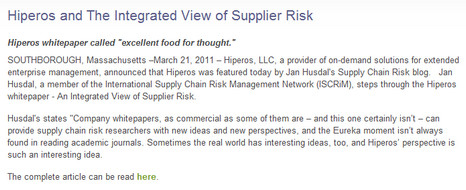
Thank You, Hiperos. That is simply priceless (and the best marketing endorsement I could wish for).

